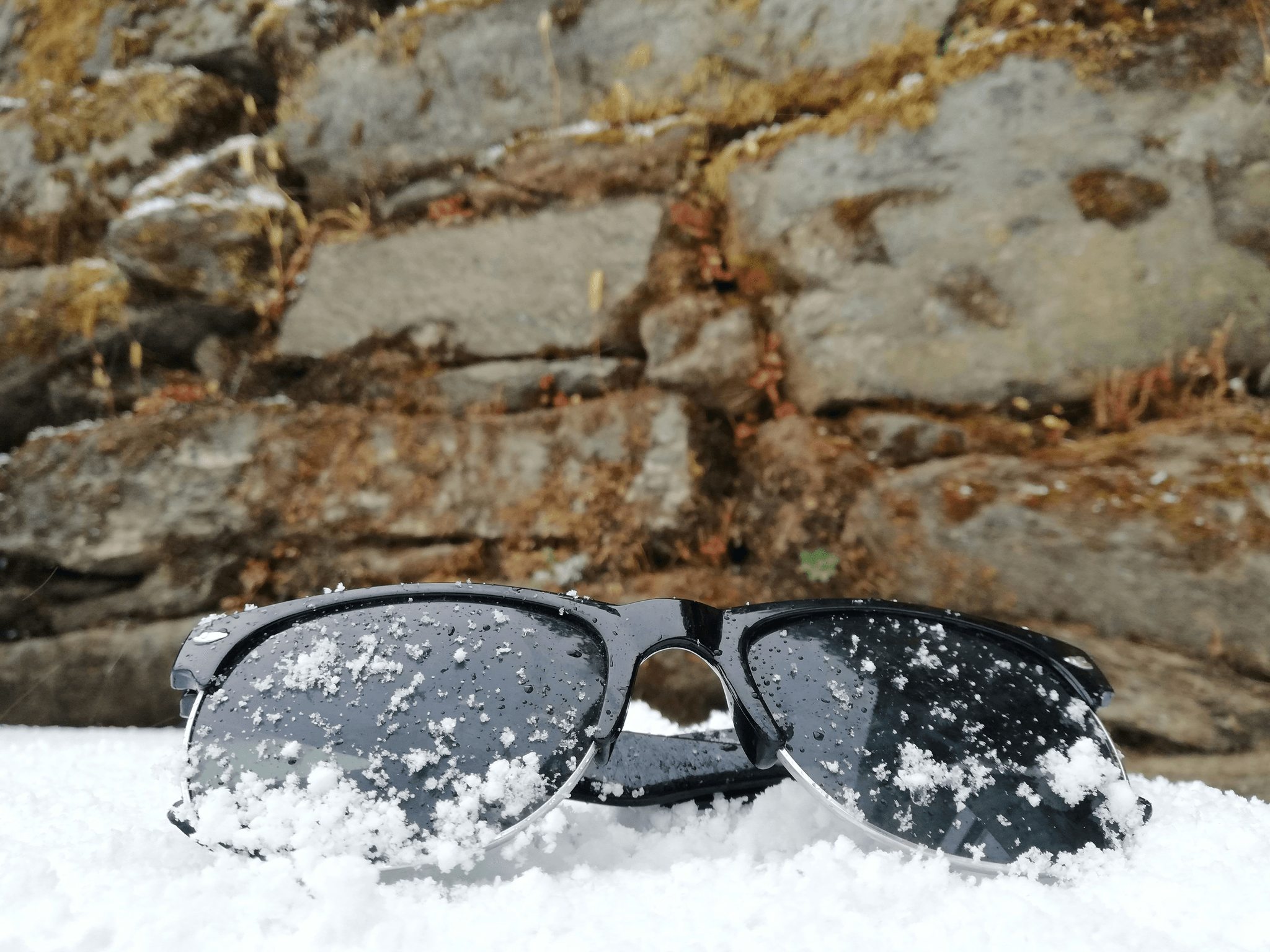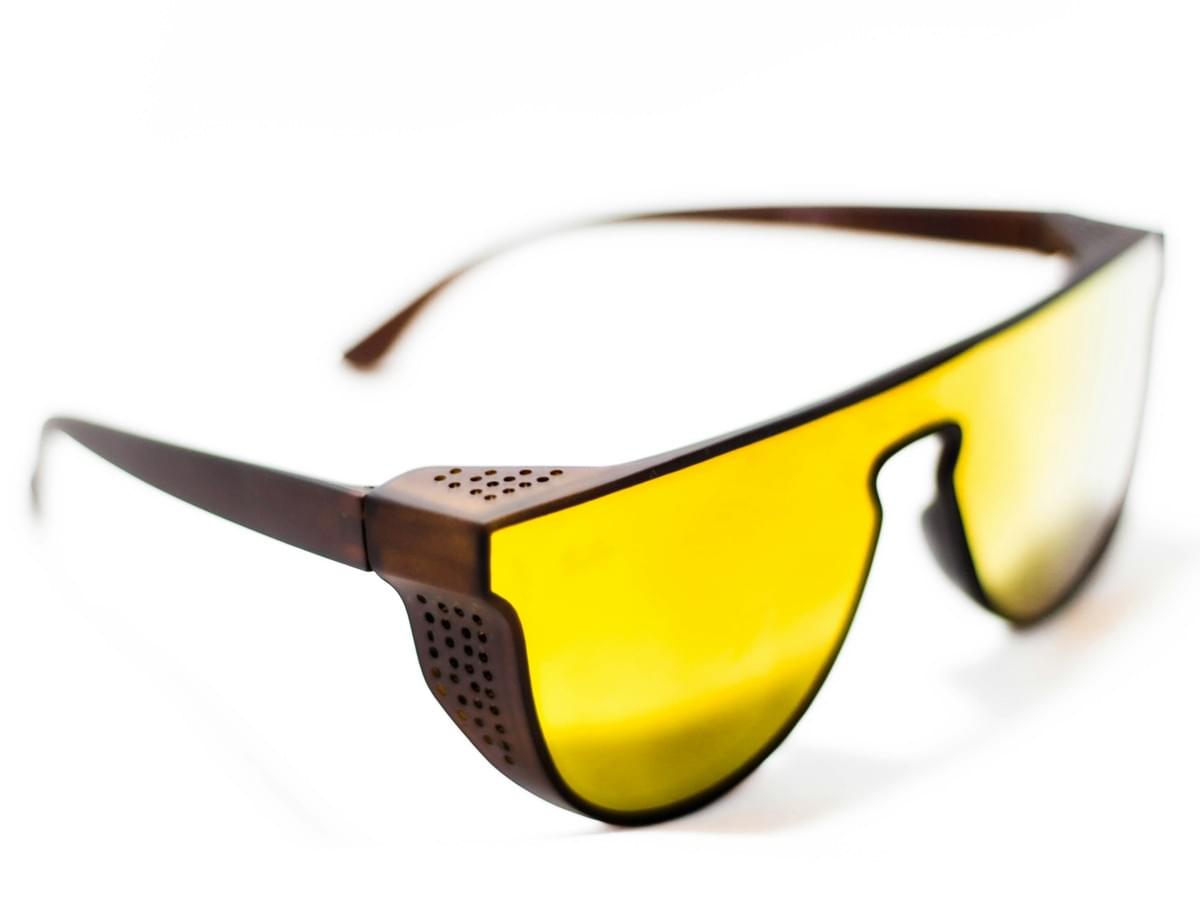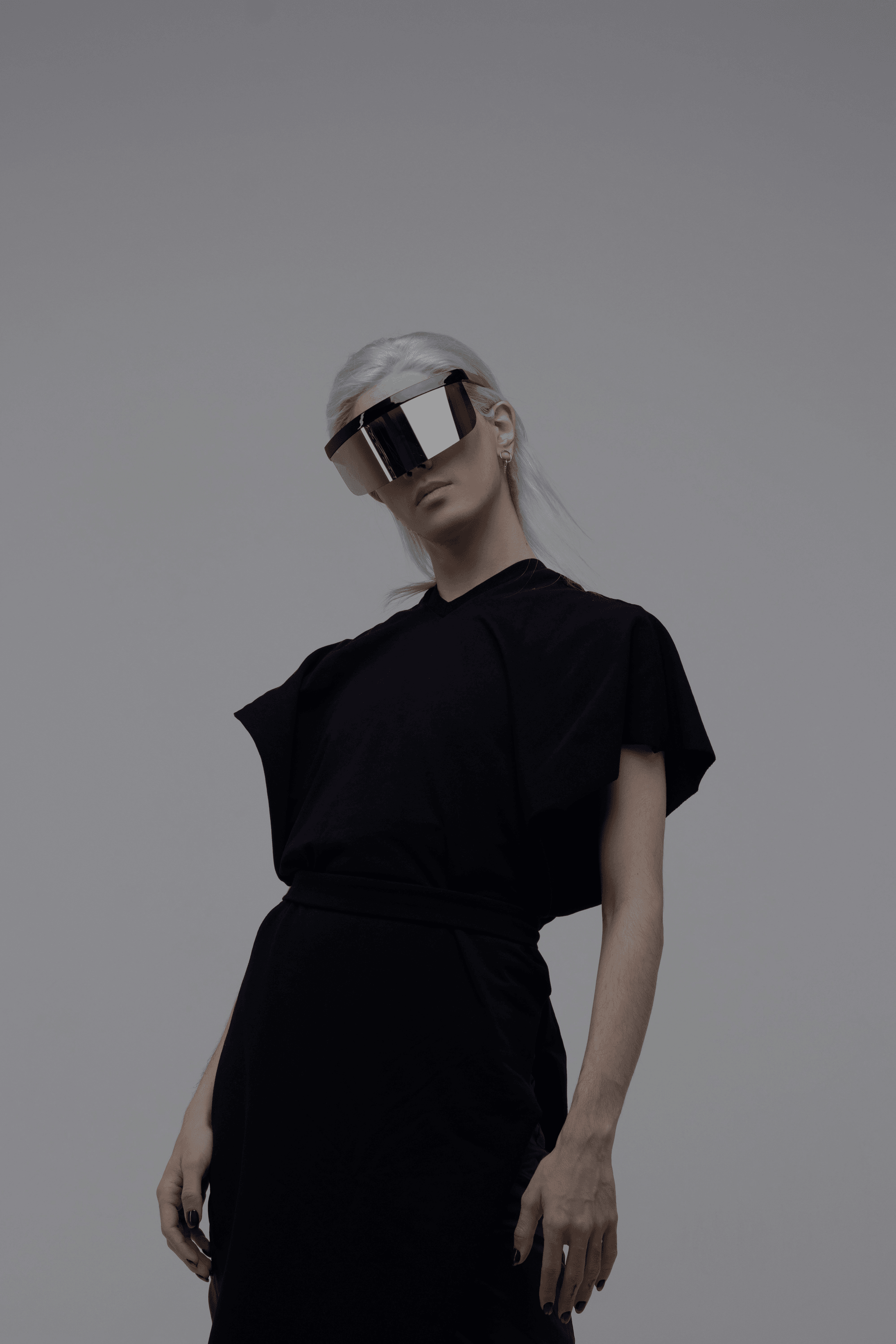Introduction
When winter rolls around, the need for proper eye protection becomes crucial. The glare from the snow can be intense, and with the increasing popularity of winter sports, understanding the difference between sunglasses and goggles is essential for both safety and enjoyment. Whether you're hitting the slopes or enjoying a leisurely stroll in a winter wonderland, selecting the right eyewear will not only protect your eyes but also enhance your overall experience.
Understanding Eye Protection in Winter
Winter presents unique challenges for our eyes, including harsh sunlight reflecting off snow and icy surfaces. This makes it imperative to differentiate between sunglasses and goggles, as each serves a distinct purpose in protecting against UV rays and glare. Additionally, knowing how goggles for women can combine style with functionality adds an extra layer of consideration when choosing eye protection.
The Appeal of Winter Sports and Activities
The thrill of skiing, snowboarding, or simply enjoying a snowy hike draws many outdoor enthusiasts to embrace winter activities. However, these fun-filled adventures can expose your eyes to harmful elements if you're not equipped with the right eyewear. Understanding how to choose between goggle sunglasses or traditional options can make all the difference in both performance and comfort during these exhilarating pursuits.
Key Factors to Consider When Choosing
When selecting eyewear for winter activities, several key factors come into play: fit, functionality, and style are paramount among them. For instance, while considering goggles vs sunglasses skiing may seem straightforward at first glance, it's essential to evaluate specific features like ventilation and lens types that cater to different conditions.
The Basics: Goggles and Sunglasses

Differences in Design and Coverage
The design differences between goggles and sunglasses are quite pronounced. Goggles typically feature a full-frame design that provides complete coverage around the eyes, while sunglasses often have a more open design that leaves parts of the face exposed. This difference is crucial when considering activities like skiing or snowboarding, where wind, snow glare, and UV rays can be particularly harsh; hence the need for goggles becomes evident.
Moreover, goggles for women often come with stylish designs that don’t compromise on safety or functionality. If you’re wondering about the shades and sunglasses difference, remember that while both can protect against UV rays, only goggles offer a snug fit that seals out cold air and moisture effectively. When choosing between these two options, it's important to consider your specific needs based on the activity at hand.
Functionality for Various Activities
The functionality of goggles versus sunglasses varies significantly depending on what you're doing outdoors in winter weather. For skiing enthusiasts debating goggles vs sunglasses skiing, it’s clear that goggles are designed to handle high-speed descents with features such as anti-fogging technology and ventilation systems. On the other hand, if you're planning a leisurely hike or simply enjoying some sunny après-ski moments, high-quality polarized sunglasses may be sufficient.
Understanding these functional differences also leads to better choices when considering activities like ice fishing or snowmobiling—where visibility is key. While both types can provide UV protection, polarized lenses in sunglasses reduce glare from reflective surfaces like snow or ice more effectively than standard lenses do. So whether you're opting for goggle sunglasses or traditional shades depends largely on your activity level.
Comfort and Fit Factors
Comfort is paramount when selecting eyewear for winter sports; after all, nothing ruins a day on the slopes faster than uncomfortable gear! Goggles tend to feature adjustable straps that allow for a customized fit around helmets or hats—ideal for ensuring they stay securely in place during vigorous activity. In contrast, finding comfortable sunglasses means considering factors like frame shape—aviators might look stylish but may not always provide ideal coverage compared to wrap-around designs.
Additionally, when examining the difference between sunglasses and spectacles (regular eyeglasses), keep in mind that spectacles typically lack any protective features against wind or debris unless they are specifically designed as safety glasses. Many brands now cater to this niche by offering goggle options designed specifically for women without sacrificing style—a win-win situation! Ultimately, finding eyewear that balances comfort with performance will enhance your enjoyment of winter sports.
Goggles vs Sunglasses for Skiing

Understanding the difference between sunglasses and goggles can make or break your skiing experience. Each option has its unique features tailored for different needs, so let’s dive in!
Essential Features of Goggles for Skiing
Goggles are designed with specific features that cater to winter sports enthusiasts, making them the go-to choice for skiing adventures. They often come with a wider field of vision, providing better peripheral awareness—crucial when dodging trees or fellow skiers on the slopes. Additionally, many goggles are equipped with anti-fog technology to ensure clear visibility in varying weather conditions, something that traditional sunglasses simply can’t compete with.
Moreover, the snug fit of goggles helps keep out wind and snow, offering protection against harsh elements that can ruin your day on the mountain. Unlike sunglasses, which may slip off during high-speed descents or bumpy rides on ski lifts, goggles stay securely in place—no more worrying about losing your shades mid-run! For women looking for stylish yet functional options, there are plenty of chic designs in goggles specifically made for women that don’t compromise safety.
The Role of UV Protection in Sunglasses
While skiing enthusiasts often lean towards goggles due to their protective features, sunglasses still hold significant value when it comes to UV protection. The role of UV protection in sunglasses cannot be overstated; they shield your eyes from harmful rays reflecting off snow and ice—an essential factor given that up to 80% of UV rays can penetrate through clouds!
However, not all sunglasses are created equal; understanding the difference between sunglasses and polarized sunglasses is crucial when making your selection. Polarized lenses reduce glare from reflective surfaces like snow but may not provide full coverage against wind or debris like their goggle counterparts do. Ultimately, if you prefer a stylish look while maintaining eye safety during winter activities, investing in high-quality polarized sunglasses could be worth considering.
Best Brands for Ski Goggles and Sunglasses
Brands like Oakley and Smith have long been favorites among skiers for their innovative designs and exceptional performance features—perfect examples highlighting the difference between sunglasses and goggles tailored specifically for winter sports enthusiasts.
For those who want versatile options without sacrificing style or protection while hitting the slopes or enjoying après-ski activities, brands such as Ray-Ban offer fashionable aviators alongside more functional goggle-sunglass hybrids (goggle sunglasses). Women seeking stylish yet safe eyewear will find excellent choices from brands like Giro or Anon that cater specifically to female skiers looking for both performance features and chic designs.
The Difference Between Sunglasses and Spectacles

While sunglasses are typically designed for outdoor use, spectacles are often prescribed for vision correction. Knowing your needs can help you choose the right eyewear that meets your lifestyle requirements.
Prescription Needs and Options
For those who require vision correction, prescription sunglasses offer a stylish solution without sacrificing clarity or comfort. Many brands now produce goggle sunglasses that combine the protective benefits of goggles with prescription lenses, making them perfect for winter sports enthusiasts. Whether you opt for traditional spectacles or specialized eyewear, it's essential to consider your prescription needs to ensure optimal visibility during activities like skiing.
Style Variations: Aviators to Polarized
The world of eyewear is brimming with style variations, from classic aviators to modern polarized options. The difference between sunglasses and aviators primarily lies in their shape; aviators have a distinctive teardrop design that exudes timeless appeal. Meanwhile, polarized sunglasses reduce glare and enhance visual comfort—ideal for snowy landscapes where reflections can be blinding.
When to Choose One Over the Other
Choosing between goggles vs sunglasses skiing can be a matter of personal preference as well as practicality. If you're hitting the slopes on a bright day, polarized sunglasses may suffice; however, if you're navigating through snowstorms or high speeds, goggles provide superior coverage and protection against wind and debris. Ultimately, understanding the shades and sunglasses difference will help you make an informed choice based on your activity level and style preferences.
The Shades and Sunglasses Difference

While both serve the purpose of shielding your eyes from harsh sunlight, they differ significantly in design and functionality. This section will delve into polarized sunglasses, the balance between fashion and function, and the latest trends for winter eyewear.
Benefits of Polarized Sunglasses
Polarized sunglasses offer a host of benefits that make them a top choice for anyone venturing outdoors in winter. One major advantage is their ability to reduce glare from reflective surfaces like snow and ice, enhancing visibility during skiing or snowboarding. Additionally, the difference between sunglasses and polarized sunglasses lies in their lens technology; polarized lenses filter out horizontal light waves while allowing vertical ones through, making your experience on the slopes both safer and more enjoyable.
Moreover, if you're considering goggles vs sunglasses skiing, polarized lenses can be a game-changer when it comes to clarity on bright days. You'll find that many goggle sunglasses also incorporate this technology for dual-purpose wear—perfect for those who want versatility without sacrificing performance. So whether you’re carving down a mountain or sipping cocoa at a lodge, polarized shades are definitely worth considering.
Fashion vs Function: Making a Choice
The age-old debate of fashion versus function rears its head when selecting between different eyewear options like goggles or traditional shades. While style is undeniably important—after all, who doesn’t want to look chic on the slopes?—you must also consider how well your chosen eyewear performs under various conditions.
The difference between sunglasses and spectacles can often lead to confusion among consumers; spectacles may provide vision correction but lack protective features against UV rays or glare common in winter sports settings. On the flip side, while aviators may be trendy for après-ski gatherings, they might not cut it when battling blinding sunlight on fresh powder days. Ultimately, finding that perfect balance ensures you look good while staying protected—a win-win!
Popular Trends in Sunglasses for Winter
As we dive into popular trends in sunglasses for winter 2023-2024, it's evident that functionality meets fashion this season! Retro-inspired designs are making waves alongside futuristic styles that promise both flair and effectiveness against UV rays. Goggle sunglasses are particularly trending as they fuse comfort with performance—ideal for those who enjoy both style and adventure.
Additionally, vibrant colors are taking center stage this year; think bold reds or icy blues that not only protect but also pop against snowy backdrops! Whether you're opting for classic aviators or innovative goggles designed specifically for women (yes ladies!), there's no shortage of choices reflecting personal style while addressing practical needs like glare reduction or UV protection.
Women’s Options: Goggles for Women

The right goggles for women can elevate your skiing or snowboarding experience while ensuring optimal protection against the elements. With so many options available, it’s essential to find designs that don’t compromise on performance or aesthetics.
Stylish Designs that Don’t Compromise Safety
Gone are the days when protective gear meant sacrificing style; today’s goggles for women come in a variety of chic designs and colors. Many brands have embraced fashion-forward looks without skimping on safety features, making it easier to express personal style on the slopes. Whether you prefer bold patterns or sleek minimalism, there are stylish options that meet rigorous safety standards—ensuring you look good while staying protected.
Performance Features for Female Skiers
When considering goggles vs sunglasses skiing, performance is key, especially for female skiers who demand both functionality and comfort. High-quality women's goggles often feature anti-fog coatings and superior ventilation systems to keep your vision clear during intense runs. Additionally, many models offer adjustable straps and foam padding designed specifically for a woman’s face shape, providing a snug fit that enhances comfort without sacrificing safety.
Trusted Brands Catering to Women's Needs
Several trusted brands have made a name for themselves in producing top-notch goggles tailored specifically for women. Companies like Smith Optics, Oakley, and Giro are known for their commitment to quality and innovation in goggle design. By focusing on the unique needs of female athletes, these brands ensure their products not only provide excellent protection but also align with current trends—making them ideal choices in understanding the difference between sunglasses and goggles.
Conclusion
Choosing the right eyewear for winter activities can be a delightful yet daunting task. With various options available, understanding the difference between sunglasses and goggles is crucial, especially when you're planning to hit the slopes or enjoy a sunny winter day outdoors. Whether you lean towards stylish aviators or functional goggle sunglasses, your choice should reflect both your activity and personal style.
Choosing Based on Activity and Style
For instance, if you're racing down a snowy hill, goggles provide superior coverage and protection against wind and snow flurries. On the other hand, if you’re just enjoying a leisurely walk in the winter sun, stylish shades may suffice—just remember to consider the difference between sunglasses and polarized sunglasses for optimal visibility.
Additionally, understanding the difference between sunglasses and spectacles is essential for those who require prescription lenses. While some brands offer fashionable goggle options specifically designed for women that cater to both style and safety needs, others might prefer classic aviators that complement their winter wardrobe. Ultimately, choosing eyewear that aligns with your activities while reflecting your personality can elevate your winter experience.
Performance and Protection in Winter
Performance is key when selecting eyewear for cold weather adventures; thus knowing about the shades and sunglasses difference becomes imperative. Goggles offer enhanced protection from harsh elements like icy winds or bright reflections off snow-covered surfaces—ideal for serious skiers or snowboarders looking to maximize their performance on the slopes. Meanwhile, high-quality polarized sunglasses can reduce glare on sunny days while still allowing you to enjoy outdoor activities comfortably.
Moreover, understanding features such as UV protection is vital when considering either option; after all, harmful rays don’t take a break just because it’s cold outside! For those who prioritize functionality without sacrificing aesthetics in their eyewear choices during winter sports or leisure activities alike, investing in quality gear will ensure both performance enhancement and eye safety throughout all seasonal adventures.
Your Go-To Resource: Aisen Optical for Quality Eyewear
They offer an impressive selection of goggle sunglasses along with various styles that cater to individual preferences while ensuring top-notch protection against UV rays and environmental elements alike. With knowledgeable staff ready to help you navigate through choices regarding the difference between sunglasses and goggles or even shades versus polarized options, Aisen Optical makes shopping enjoyable.
In conclusion, whether you're gearing up for an intense day on the slopes or simply taking in a picturesque winter landscape under bright skies, selecting suitable eyewear goes beyond mere aesthetics—it’s about performance too! So next time you're faced with deciding between different types of glasses or goggles this season remember: choose wisely based on activity level while keeping style firmly in mind!
